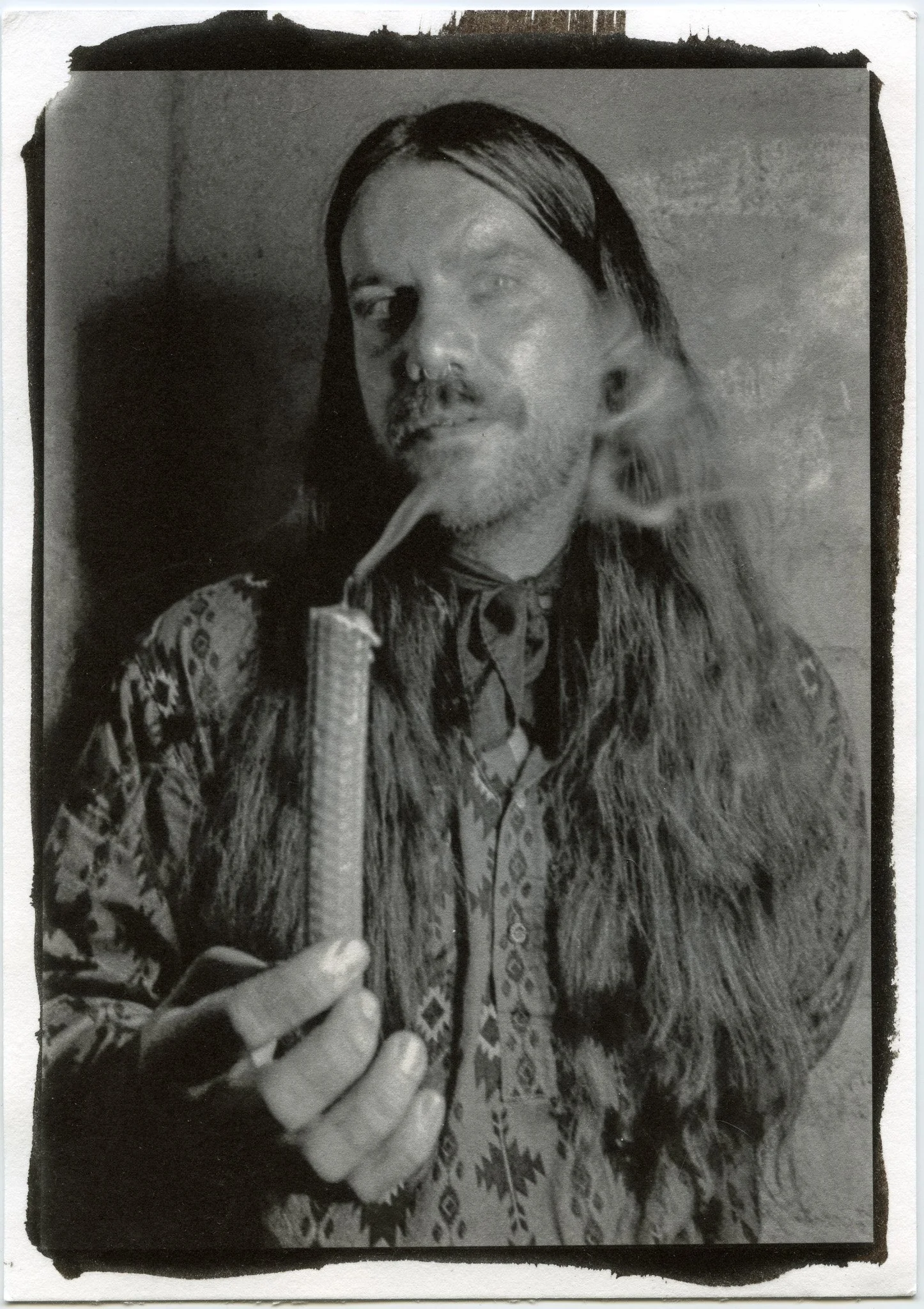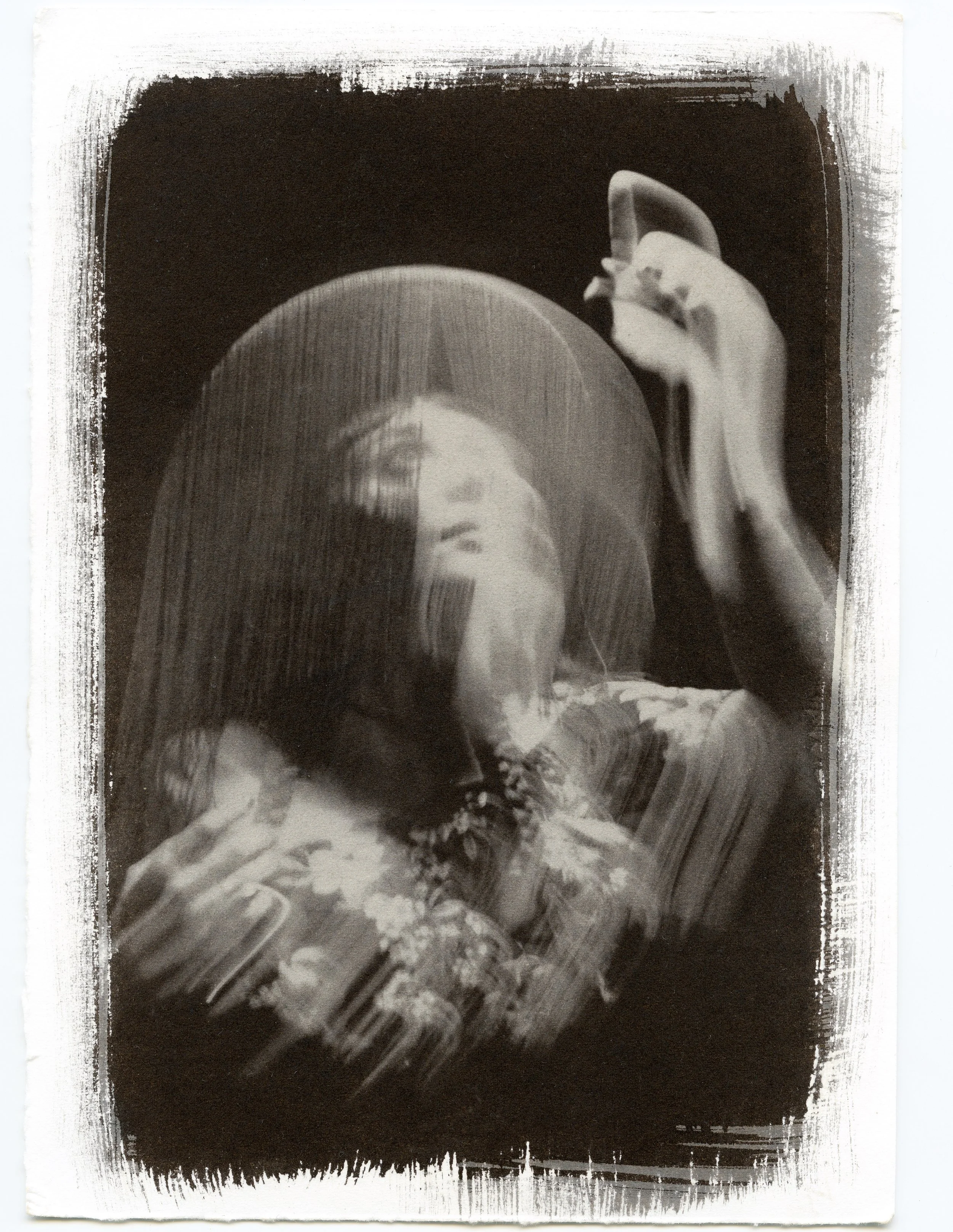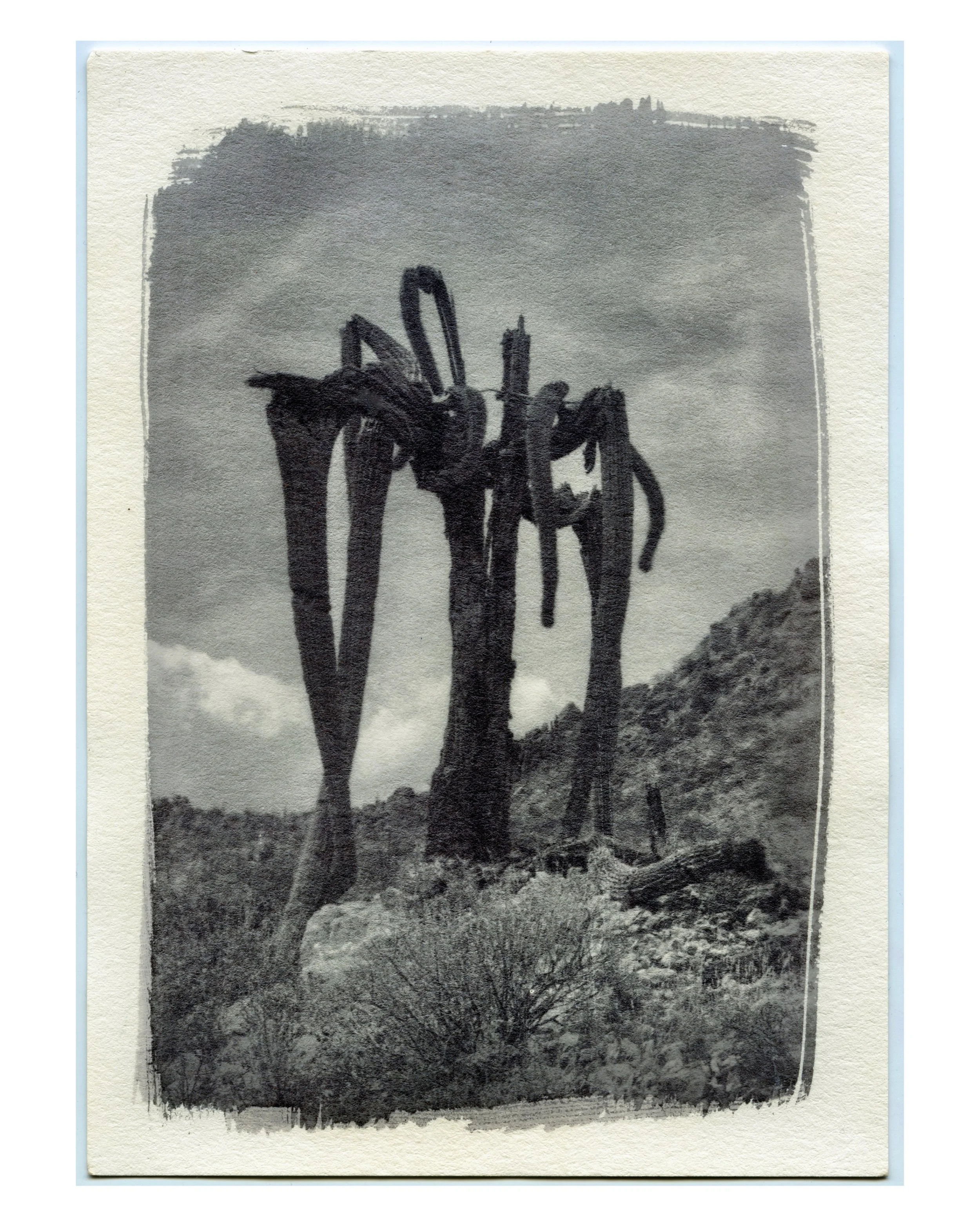Alternative Process
Salt printing is a late 1800’s printing process, where a paper is coated with a solution of salt and silver nitrate, creating a light-sensitive surface. When exposed to light through a negative, the silver halides form an image on the paper. Gold toning is often used as a finishing step to enhance the image. After the print is developed, it is immersed in a gold chloride solution, which replaces some of the silver in the print, resulting in richer tones, increased archival stability, and a unique color shift—typically producing warmer, more detailed images.
The Kallitype process is an iron-silver photographic printing method developed in the 19th century, known for its rich tonal range and flexibility. Paper is sensitized with ferric oxalate and silver nitrate, then exposed to UV light under a negative, forming a latent image. After development, the image is toned before fixing, and platinum toning is a common choice—replacing silver with platinum, which deepens the blacks, increases permanence, and gives the print a smoother, more subtle tonal quality that closely resembles true platinum prints.
Cyanotype is a photographic printing process where paper (or fabric) is coated with a solution of ferric ammonium citrate and potassium ferricyanide, dried, and then exposed to UV light under a negative or object; the light reduces the iron salts, and after rinsing in water, the image appears in its characteristic deep blue.




